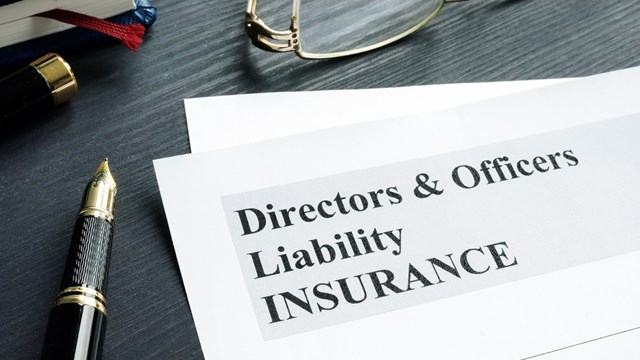
To those who don't know much about the subject, insurance for condos and HOAs can seem like a fairly simple thing—like car insurance, or life insurance. It's tempting to just trust their broker or agent, and leave it at that.
There's much more to protecting an association from risk than meets the eye, however. Homeowners associations are complex entities, and as such, their coverage needs are multifaceted. There's insurance for the common areas such as the hallways and lobbies, insurance for the mechanical systems, boilers, elevators and the like. There's fidelity bond coverage for employees, and—especially nowadays—flood and earthquake coverage.
Of course, the insurance industry is heavily regulated—including companies who offer coverage for condos, co-ops and HOAsvand those regulations and various pieces of governing legislation are changing all the time. That's why board members and managers should make a special effort to keep up with new developments in insurance.
New World, New Rules?
The insurance industry has borne witness to many changes in the past five to 10 years. One of these, certainly, involves terrorism insurance, something that wasn't thought of much before 9/11.
However, says Dan Corbin, director of research for the Professional Insurance Agents of New Jersey (PIANJ), "Unit owners' policies (called HO-6 policies) have not changed much over the past 10 years, except to the extent that they have been updated along with other types of homeowners' policies. There is also attention being given to insuring property for flood damage, and the increased costs to replace structures according to current building codes."
Corbin also mentions another change. Recently, he says, many associations have purchased property insurance with high deductibles, meaning $10,000 and over, to reduce costs. If multiple units are damaged by one event, all of the owners may get assessed for the deductible. If one particular unit is also damaged by an event, likewise, that owner can get assessed for the deductible.
Attorney David Byrne of Stark and Stark adds that "Commercial general liability policies are more open to mold-related coverages." Still he says, there are caps on the amounts involved, and there are a large number of exclusions that "swallow up the coverage."
Byrne also says that nowadays, "Condos in New Jersey absolutely have to have replacement coverage [which is] coverage that will pay what it costs to replace covered items for their full value. Individuals will have it for the contents of their own units—clothes, furniture, rugs." Fixtures within a unit, such as tiles, counter tops and bathroom fixtures, are also the responsibility of the unit owner, though in the event of major fire or similar catastrophe, the coverage of the condo as a whole will come into play.
Legislation Updates
As far as new insurance-related legislation is concerned, Marshall McKnight, public information officer of the New Jersey Department of Banking and Insurance, points to provisions for expedited rate filing, and for a hurricane deductible to ease the burden on homeowners by reducing costs in the event of such a severe storm. Both of these provisions became effective as law in January 2002, and the related regulations became effective in 2003.
Robert Barlow of Wachovia Insurance Services in Summit mentions another important change in legislation that has taken place in the last decade. In New Jersey, there is now an immunity legislation clause that, if adopted by two-thirds of an association's owners, basically forces a unit owner to prove "gross negligence" if he or she files a liability claim against the association in court.
For those of you who are not attorneys, "gross negligence" is basically defined as failure to use even the slightest amount of care in a way that shows recklessness or willful disregard for the safety of others. The above clause, by the way, cannot be done while the developer is still in control of a development.
Obligation to Warn
If there is one case that has seriously affected the rules involving insurance coverage for HOAs and condos, it very well may be Siddons v. Cook and Country Place Condominium (the whole text of which can be found at www.njlawblog.com/articles). In this case, an Appellate Court found that condominiums may have a duty to warn condominium unit owners about potentially dangerous conditions known to it, even if those conditions involve only an individual unit.
The Siddons case centered around Sandra Siddons, a condominium association member whose unit was flooded when a faulty dishwasher hose burst in the unit directly above hers. She sued both the upstairs unit owner and her condo association for damage to her apartment. In the course of the procedures, it came up that the condo had known at least three other apartments that had experienced similar problems with faulty hoses.
The trial court found no liability with the association as a whole, but the Appellate Court reversed this decision, finding that associations have a duty to warn unit owners of potentially dangerous conditions, even if they only involve issues related to that particular unit.
'Insured to Value'
Another change that doesn't involve new legislation or a court decision, but is important nonetheless, involves the fact that nowadays, insurance companies are concerned that a property is "insured to value." When it comes to rating a policy and determining the premium, says Barlow, the yardstick has always been the property's total insured value and the maximum probable loss a company might sustain.
In the past, many building and operating systems were not updated regularly—and if they were, upgrades might not be reported accurately to the HOA's underwriters. Thus, insurance companies did not get the correct premium for their risk, and the insured parties didn't get the correct value of their property in the event of a total loss.
If a unit owner's property is not insured to total value, says Corbin, in the event of a major loss event, the owner is responsible to pay the shortfall in property insurance in the form of an assessment. Managers should pay particular attention to this, because if the unit owners are unhappy with these assessments, they may blame the association's management.
Finally, property insurance rates are established on the presumption that their property will be insured to total value. If a property is underinsured, then the rates are inadequate for reimbursement in the event of property damage.
D&O Insurance
If you're a board member of a condo, co-op or homeowners association, just because you're a volunteer doesn't prevent you from being sued if you make a mistake. This is the reason for directors and officers' liability insurance, also known as D&O coverage.
D&O insurance isn't unique to the condo world, of course—most major corporations also carry this type of coverage. In condos and homeowners associations, it can also apply to committee members and to people acting on behalf of the board.
Unfortunately, says Barlow, there are only a few programs that provide competitive premiums and appropriate coverages for condominiums, co-ops and HOAs. It's not necessarily on the front burner for many insurance companies - but it's absolutely essential for associations.
There haven't been that many recent changes in D&O insurance, according to experts, although there have been enhancements. One item that is now included in many D&O insurance policies is what's known as employment practices liability. These clauses provide coverage when an employee files an employment-related claim, such as an accusation of wrongful termination, discrimination or sexual harassment.
"This exposure is recognized as just one more type of wrongful act that directors and officers could be liable for," says Corbin, "so it has been packaged with D&O insurance by many insurers."
In New Jersey, says McKnight, the department regulates the companies that sell this type of insurance (except for "surplus lines" insurers, or insurers who are not authorized to do business in this state) but does not regulate the policy forms and prices—those items are now deregulated. Honest, reputable insurance brokers and industry organizations like PIANJ are the best resources for more information about your board's options regarding D&O and its related coverages.
Umbrella Insurance
Another type of insurance that condos and HOAs must have is umbrella coverage. Umbrella policies include "excess insurance" which is designed to increase the limits of liability—an important component in the event of a catastrophe. For example, a primary $500,000 insurance policy is written, and excess insurance is written for $2 million. So, the primary insurance would pay all losses up to $500,000, and the excess policy would cover all losses in excess of that amount, up to $2 million.
In addition to excess insurance, umbrella policies also cover unusual exposures not otherwise covered by underlying policies. Just as a hypothetical example, a condo located next door to a chemical plant (which we hope you're not living in!) might have an umbrella policy that will include insurance against chemical contamination, should something go seriously awry at the plant.
"If there has been a trend in the umbrella market," says Corbin, "it has been the reduction or elimination of this extra coverage not included in the underlying policies, making umbrella policies merely excess policies."
What's New?
What's new in the insurance industry for the condo and co-op market? Most industry experts agree that there are always new products being introduced, but they often amount to just a repackaging or enhancing of existing insurance coverages.
One way insurance coverage must change is to cover new and evolving technology. For example, some HOA and condo developments are now installing defibrillators, or devices that deliver a therapeutic dose of electricity to the heart of a person in the throes of cardiac arrhythmia. If an unqualified person tries to use it—or someone who is qualified makes a mistake—it could be a recipe for a lawsuit.
However, says Corbin, "This is more of an underwriting issue than a coverage issue. The insurer may want to know that personnel are trained to use it and that the equipment is maintained properly."
And devices like defibrillators may be just the tip of the iceberg. As technology and telecommunications continue to advance, new areas of liability and risk exposure will likely crop up. And be assured, insurers will be there to offer new products to fill the gap and enable HOA directors to sleep soundly.
In the end, that's what insurance is about—security and peace of mind.
Raanan Geberer is a freelance writer and editor living in New York City.






Leave a Comment